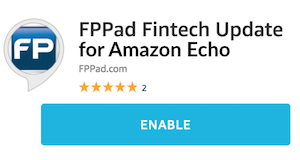
How it works.
First and foremost, VCS provides the ability to manage multiple versions of the same piece of information. Software engineers use it extensively as bugs are corrected in source code and new comments are added that describe functionality or identify subroutine procedures.
To update a document, a user must first “check out” the document from the VCS. The program identifies who checked out the document and modifies the document’s permissions so that only one individual can modify it. All other users see that one individual has locked the document, preventing other users from making their own changes (well, not totally preventing changes, but we’ll address that later). The user then “checks in” the document to VCS after changes are applied to the document. The older version of the document is automatically archived by the software, the new changes are recorded, and the document becomes unlocked for all other users.
Why Financial Planning Firms Need It
Let’s face it; financial planning firms have lots of internal procedures, and if your firm is like mine, many of these procedures are tracked with internal forms (electronic tracking is a ways out at our firm, but it’s on my radar screen). The problem with these internal forms is that changes are often needed, but many times there’s no history of what changes were added or removed in the past. This is especially frustrating for new employees coming on board as they try to learn about the forms, but also question why certain procedures exist and why others have been omitted.
Adding the use of VCS for internal forms facilitates the management of said forms. Users can view the history of file updates, complete with the comments of what was checked in, who checked it in, and when it was last updated. Many software packages even allow document comparison and will highlight portions of the document affected by changes (note: this works well with software code files, but not so well with Microsoft Office applications, unless the VCS is Office-compatible). Now users can read the full history of updates and identify quickly the thought process that has evolved over the lifetime of the form.
Sandboxes
Here I had written a paragraph on the concept of sandboxes in VCS, but determined that it’s a bit beyond the needs for a financial planning firm. If you want to read more about the concept of a sandbox and best practices of multi-user modification, leave a comment below. Otherwise, on with our program…
Benefits
The use of VCS greatly enhances the integrity of all internal forms used by multiple users. For financial planning, one could conceivably create a VCS “project” that represents all templates of a written comprehensive financial plan. As updates and revisions are adopted by the firm (for example, rate of return assumptions, investment allocation breakdowns, safe withdrawal rates, etc.), changes to the templates can be checked in to VCS.
Users can update VCS to use the latest version of each file so they know that they are not using any out of date files with inaccurate assumptions. No longer would planners have to dig up past versions of a plan document to pull out certain sections when creating a new plan for a client. Even when past versions were found, how would one know (other than the date stamp, which is unreliable) which version is the corrrect one? Sound familiar?
There are quite a number of VCS programs available, both open source and proprietary. A fantastic list of them can be found at Wikipedia. Personally, I have used MKS Integrity and Microsoft Visual SourceSafe in a variety of capacities. Even Google Documents has a feature to compare different revisions of the same document; check out the Revisions tab the next time you’re editing a document. I hope to install a VCS program at my firm, but I first need to obtain a buy-off of this new process to manage internal forms. Let’s hope this happens sooner as opposed to later.





Trackbacks/Pingbacks
[…] So after editing one file, three versions of it now exist, spread across SugarSync and the iPad! Long time readers of FPPad know how I hate multiple versions of files and the plague of “versionitis.” […]